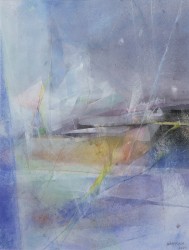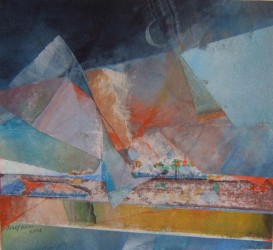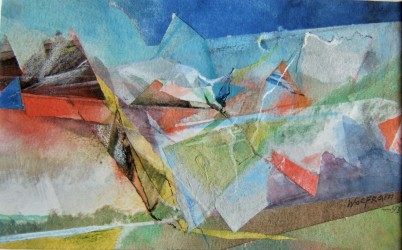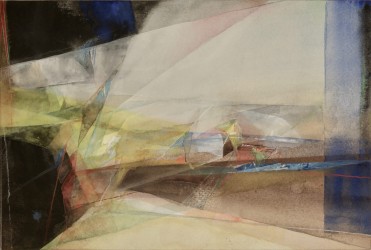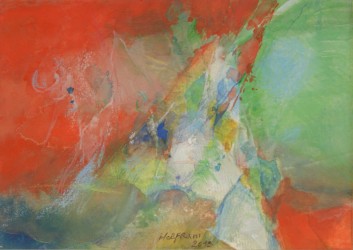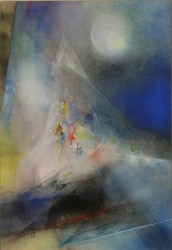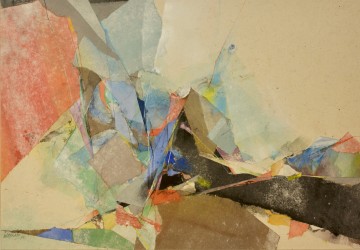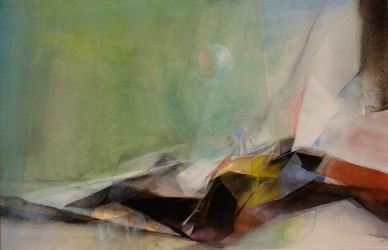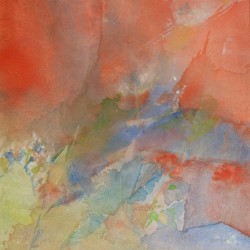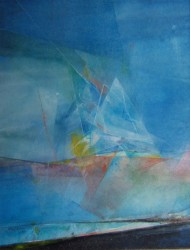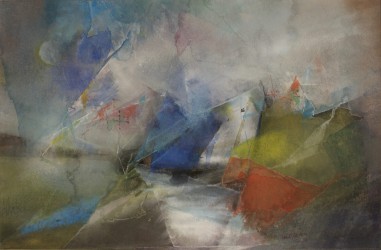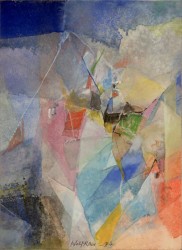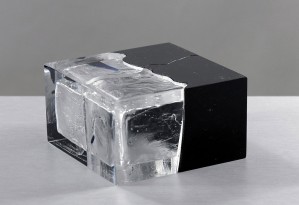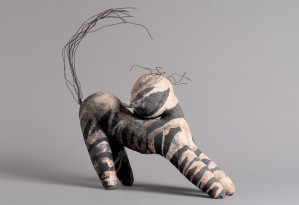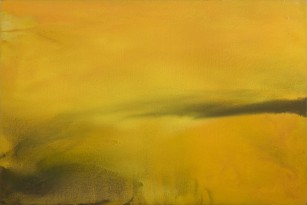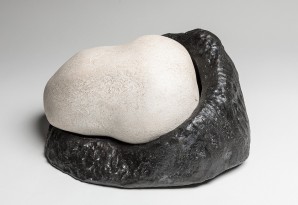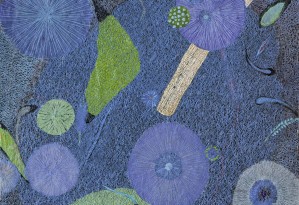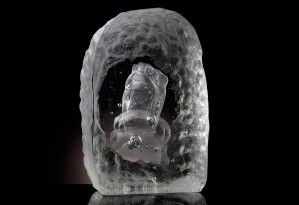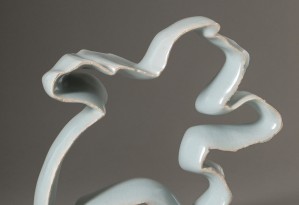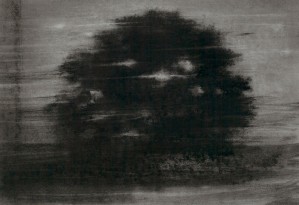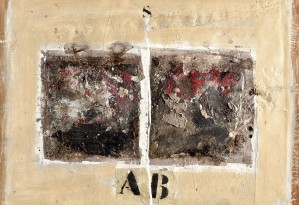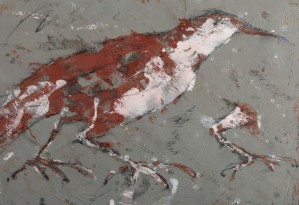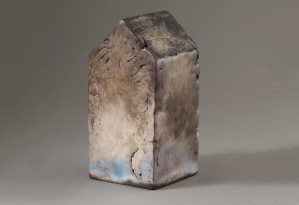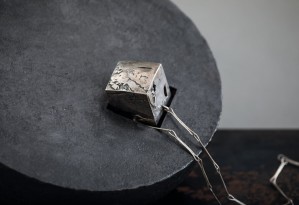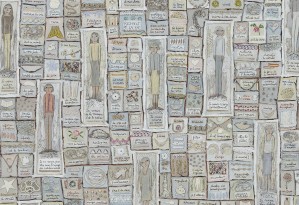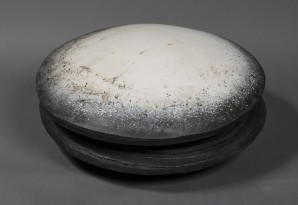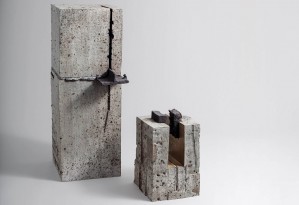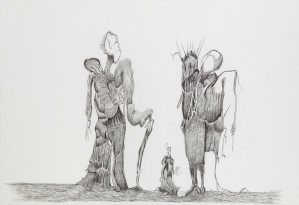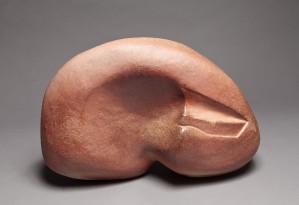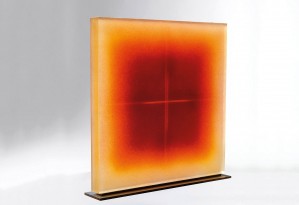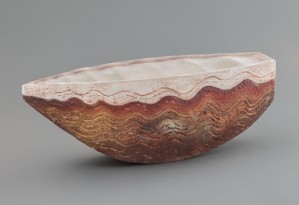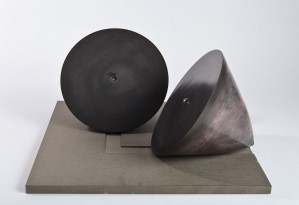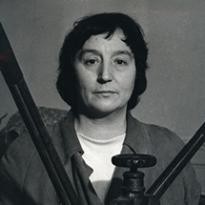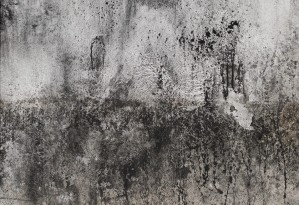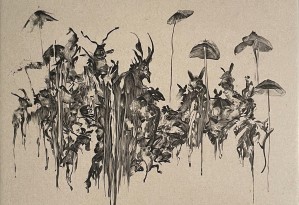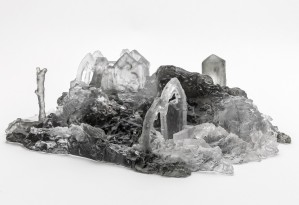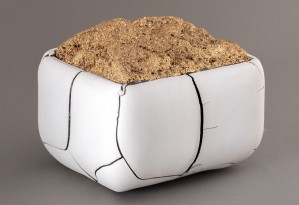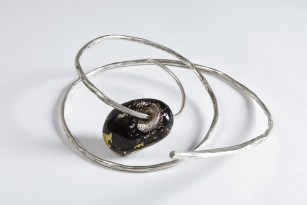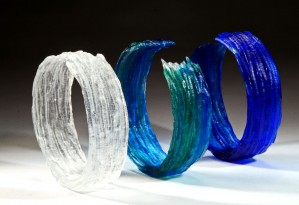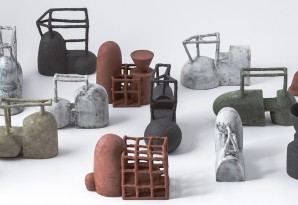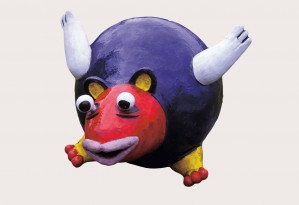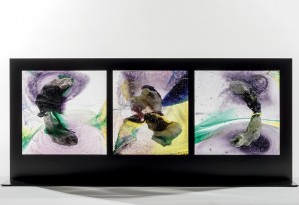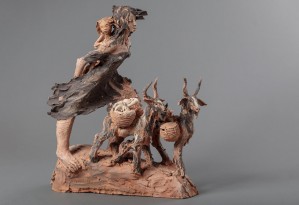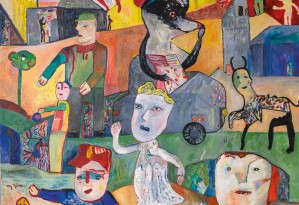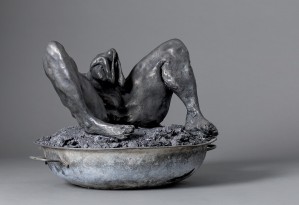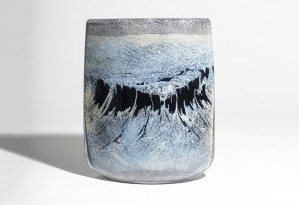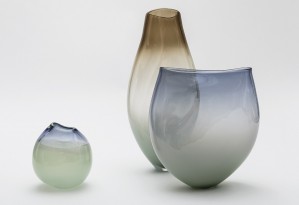WOLFRAM, painting, permanent artist of the Galerie Capazza since 1986
Birth of the artwork
The artist’s creative drive is something that has always fascinated me.
What are the prerequisites for a particular person to become an artist?
A genetic predisposition is clearly essential: it may be that the artist`s brain works in a slightly different fashion, allowing for a heightened sense of observation, acute visual perception and an innate ability for draftsmanship.
The artist may also have grown up in a family environment that favours the visual. Encounters with particular people - especially artists - may well have left a profound impression. So, indeed, might the discovery of particular works of art.
The artist will also have to respond to the intellectual and artistic trends of the era in which he lives.
All these factors are important in the development of an artistic sensibility, but there will always remain an unknown element in the question of why some people - artists - have this creative impulse.
The artist is attuned to what needs to be expressed. Images real and imaginary, born out of memories, fantasies and even anxieties are the base elements in his creative process. Like a master alchemist, he transforms these into something `other` and `higher` - a work of art - using his craftsmanship and his sensitivity.
The work of art is born: it remains only for the onlooker to respond in order for the creative process to be completed.
B. Rodi Extract of Meeting at the transformation point, Editions Galerie Capazza, 2013
Translation Giles Milton
Biography
Wolfram Aichele, painter, born in 1924 in Freiburg im Breisgau (Germany). He grew up in the town of Pforzheim, where his father, the animal painter Erwin Aichele taught drawing.
Very early, he shows a taste for the atmosphere of small villages with their half-timbered houses that he applies to draw. Popular art attracts him. He is also fascinated by the works of German Gothic. His adolescence is marked by great mountain races that reveal him the alpine landscape, from which he retains the reflection of the light on the glaciers, the game of atmospheric changes and the crystalline structure of the seracs.
Wolfram is not very keen on academic studies and is trained as a carpenter before learning how to carve wood in Upper Bavaria.
The call to the flag interrupts this training.
In 1942, Wolfram was sent to Russia and became seriously ill. He remains a long time between life and death. Restored, he is transferred to the Western Front where he is taken prisoner. After two years of captivity in the United States, he returned to Germany in 1946. He could then complete his training as a sculptor.
In 1949, he enrolled in the sculpture class of the Academy of Fine Arts in Stuttgart and began to paint and mosaic. This period of personal research is first and foremost marked by a deepening of his interest in avant-gardes and the discovery of degenerate artists.
At the same time, he is attracted by Byzantine art, which seems to respond to a quest for an art that expresses a spiritual dimension. He learns icon painting and explores the theology that is related to him. In 1954 he began a long journey in the Balkans, visiting Serbian monasteries, staying for several weeks at Mount Athos.
Beginning in 1955, Wolfram creates small-format paintings in which the memory of his journey blends with reminiscences of Central European folk art. But these charming compositions reveal above all the lessons learned from artists of the Blaue Reiter, cubism and works from the Russian period of Chagall.
The following year, Wolfram moved to Paris. He definitely adopts watercolor, which he will explore the technique in a very personal way throughout his career. His spatial research tends towards an abstraction of the forms, in profit, in favor of the luminous effect supported by colored tensions. The human figure disappears, the themes are reduced to a few interiors, still lifes, architectures, and especially landscapes divided into facets, balanced like architectural constructions, and whose vibrating aspect is not without evoking the music. Interest in Kandinsky and Klee is always present, but Wolfram's highly independent sensitivity and character, as well as his intimate sense of the spiritual, can not be satisfied with any theoretical system or current.
Wolfram found his pictorial language at the end of the 1960s, a period that corresponds to the beginning of his full recognition by the public. He mixes transparencies of an airy lightness with research of materials that are not expected of a watercolorist. The choice to limit oneself to the only works on paper, far from being a constraint, leads to a demanding deepening, always renewed.
In the 1980s, Wolfram introduced collages. He composes from pieces that he himself painted beforehand, or with falls of his own watercolors. The works thus acquire a tactile relief.
In the last years of his life, Wolfram moves further away from the transparency effects traditionally associated with watercolor.
He is concentrating more and more on the pure game of colors that become astonishingly intense, especially the red which takes a prominent place. It is no longer a question of space: his works have become totally abstract.
In the late 1970s Wolfram had settled with his wife and two children on the edge of the Bois de Vincennes. He lived there until his death in 2016.
To know more
One Month - One Artist is a monthly event to make you discover the artists of the gallery.
Find the one dedicated to Wolfram published in May 2019, to download here ![]()
Main personal exhibitions
2019 Galerie Capazza, tribute exhibition, Nançay
2015 Château Hohenheim, Stuttgart, Allemagne
2014 Arts Elysées / Galerie Capazza de Nançay, Paris
2013 Galerie ART-Aujourd’hui Paris
2009 Exposition "Familientreffen" à l'association artistique "Buslatgilde" Neulingen/Pforzheim, Allemagne
2008 Galerie Olivier Nouvellet, Paris rue de Seine
2005 Association artistique “Buslatgilde” Knittlingen - Allemagne
Galerie Olivier Nouvellet, Paris rue de Seine
2004 Galerie Capazza, Nançay, France
2002 Centre Culturel "Nikolaus-Cusanus-Haus" Stuttgart-Birkach, Allemagne
1997 Galerie Municipale "Kunsthöfle", Stuttgart-Bad Cannstatt, Allemagne
1996 Centre Culturel "Johanneshaus", Oeschelbronn, Allemagne
1993 Galerie Ruf, Munich, Allemagne
Galerie du Pontgirard, Monceau-au-Perche. France
1992 "La petite Galerie"(Max Fullenbaum), Paris
1991 Galerie de Luxembourg, Grand-duché
1988 Galerie Capazza, Nançay, France
1987 Galerie de Luxembourg, Grand-duché de Luxembourg
Galerie Wolf, Pforzheim
1986 Galerie Capazza, Nançay, France
1984 Bundesbank (Banque Fédérale) Francfort/M. Allemagne
Galerie Chichio Haller, Zurich, Suisse
1983 Kunstverein Backnang, Allemagne
1982 Galerie Jean-Louis Roque, Paris
1980 Galerie d'Art Municipale, Esch-sur-Alzette, Grand-duché de Luxembourg
Galerie "Haus zum Dachs", Fribourg en Brisgau, Allemagne
1978 Galerie L'Orangerie, Oostende, Belgique
Galerie Paul Bruck, Grand-duché de Luxembourg
Galerie Lenten, Epse, Pays-Bas
1977 Galerie Jean-Louis Roque, Paris
Galerie Betty Thommen, Bâle, Suisse
1976 Galerie d'Art Municipal, Esch-sur-Alzette, Grand-duché de Luxembourg
1974 Galerie L'Orangerie, Oostende, Belgique
Galerie Paul Bruck, Grand-duché de Luxembourg
Galerie Le Chapelin, Paris
1972 Galerie Jean-Louis Roque, Paris Galerie Saint-Léger, Genève, Suisse
1971 Galerie Bettie Thommen, Bâle, Suisse
1970 Gedokhaus Stuttgart, Allemagne
1968 Galerie Möhring, Wiesbaden, Allemagne
1967 Galerie Saint-Fargeau, Paris
1965 Galerie May Düsseldorf, Allemagne
1964 Kunstverein Erlangen, Allemagne - Kunstverein Pforzheim, Allemagne
1963 Galerie Hayden, Munich, Allemagne
1961/62 Galerie May, Düsseldorf, Allemagne
Read moreMain group exhibitions
Participates since 1986 at the collective and annual spring exhibitions at the Galerie Capazza
2008 "Petits formats", Artistic association "Buslatgilde" Katharinenthaler Hofgut,Neulingen/Pforzheim
2000/01 Collective exhibition at Chauray, Deux-Sèvres
1999 Collective exhibition at the Galerie du Pontgirard, Orne
1998/99 Collective exhibition at the Espace Cardin by the Galerie Capazza, Paris
1996 Collective exhibition at the Théâtre du Rond Point by the Galerie Capazza, Paris
1995 Galerie Municipale, Troyes, Aube
1992 BALTIJAS CELS, Triennale Baltique, Riga
1990 LINEART, Gant, Belgique
1989 ART JONCTION, Nice
1982/86/89 Galerie Schaller, Stuttgart, Allemagne
1978/79 Galerie Marbach, Berne, Suisse - 19789ème International exhibition,
Musée de Picardie. Amiens
1966/67/68/70 Rizzoli Gallery, New York, U.S.A.
1963 Herbstsalon München, Allemagne
Read moreAcquisitions
- The city of Paris
- The French State
- The Museum of History and Art of Luxembourg
- The Land Bade-Wurttemberg
- The Federal Bank of Germany (Frankfurt / Main)
- The Central Bank of Land Baden-Wurttemberg (Stuttgart)
- Daimler-Benz (Sindelfingen)
- Many private collections
Bibliography
WOLFRAM
Franck Elgar
Collection Musée de Poche - Paris - 1977
WOLFRAM, een van de grootste aquarellisten van onze tijd
Henk van Gelre
Revue Tableaun. Nr. l, 1980 - Mijdrecht, Pays Bas
WOLFRAM
Pierre Brisset
Revue L'OEil - Paris - 1982
Spielendes Licht, Aquarelle von Wolfram
Michael Bockemühl
Revue Die Drei - Stuttgart - 1985
Le dessin, le pastel, l’aquarelle dans l’Art Comtemporain
Gérard Xuriguéra
Editions Mayer - Paris - 1987
Immobiles transhumances
Joseph Paul Schneider
in Luxemburger Wort - 1987
Wolfram, the boy who went to war
Giles Milton & Florence Hertz
2011
Contemporary Art
Galerie Capazza - Grenier de Villâtre
Nançay - 1989
Le battement mystérieux de la lumière
dans Luxemburger Wort
Joseph Paul Schneider - 1991
WOLFRAM, Catalog of the exhibition
Editions Galerie Capazza - Grenier de Villâtre
Nançay - may 2004
30 années de regard, X vu Par
Editions Galerie Capazza - Grenier de Villâtre
Nançay - 2007
Noir et Blanc
Editions Galerie Capazza - Grenier de Villâtre
Nançay - 2008
Matières à réflexion
Editions Galerie Capazza - Grenier de Villâtre
Nançay - 2012
Rendez-vous au lieu de la transformation
Editions Galerie Capazza - Grenier de Villâtre
Nançay - 2013
Ensemble depuis 40 ans
Editions Galerie Capazza - Grenier de Villâtre
Nançay - 2014
